Abstract
The mitochondrial DNA (mtDNA) in rodent-human hybrid somatic cells was studied in strains that contain nucleotide sequences from both parental mtDNAs. A test for linkage of rodent to human mtDNA was devised on the basis of the density and sequence differences between these DNAs. When a mixture of rodent and human mtDNAs was banded in a CsCl gradient and each fraction hybridized with a mixture of complementary [3H]RNA transcribed from human mtDNA and complementary [32P]RNA transcribed from rodent mtDNA, each DNA was detected as a distinct and separate band at its expected density by specific hybridization with its complementary RNA. In some of the hybrid cell strains, the mtDNA sequences derived from the two species did not separate in the CsCl gradients. This result is interpreted as evidence for linkage between sequences from the two parental mtDNAs. While the exact nature of the linkage and the structure of the molecules containing both types of sequences are not known, the evidence supports the conclusion that the linkage is realized by a covalent bond. An event leading to the covalent bonding of these different sequences may be described as recombination. Among 18 hybrid cell strains examined, 13 contained large proportions of recombinant molecules. These molecules were found in both mouse-human and rat-human strains, and in strains containing more human or more rodent mtDNA sequences.
Keywords: CsCl gradient centrifugation, RNA·DNA hybridization, biogenesis of mitochondria, cytoplasmic genetics
Full text
PDF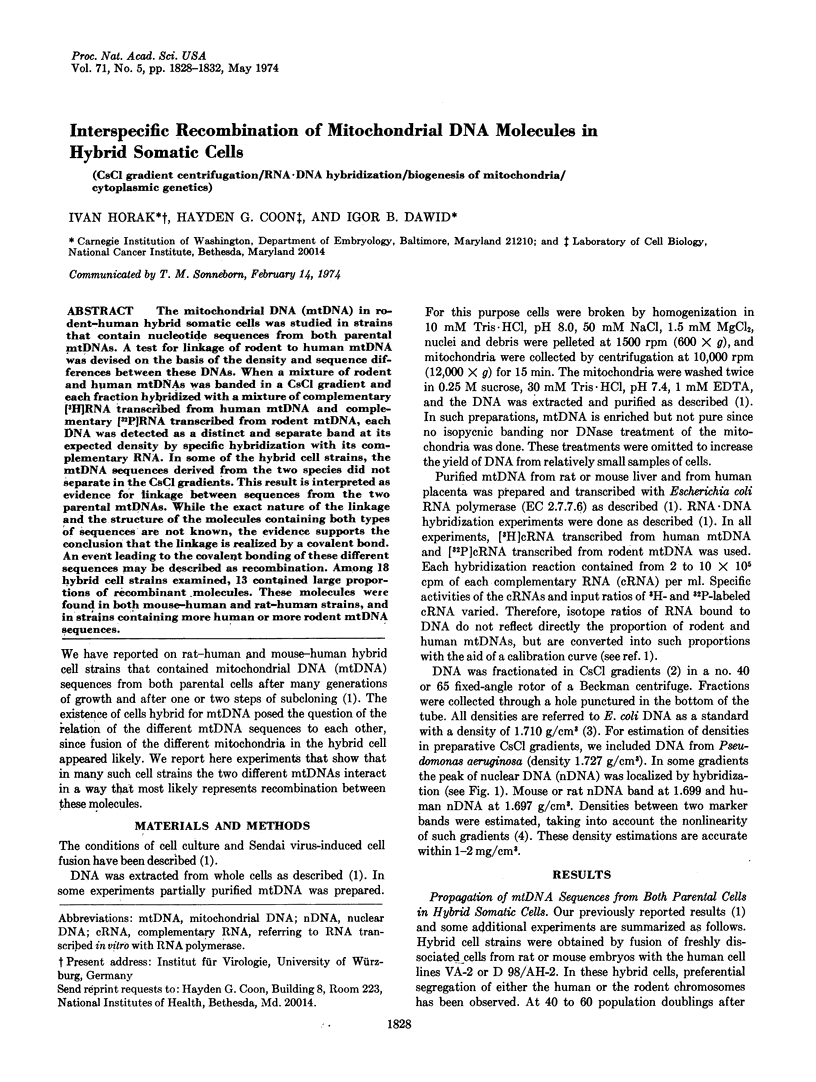
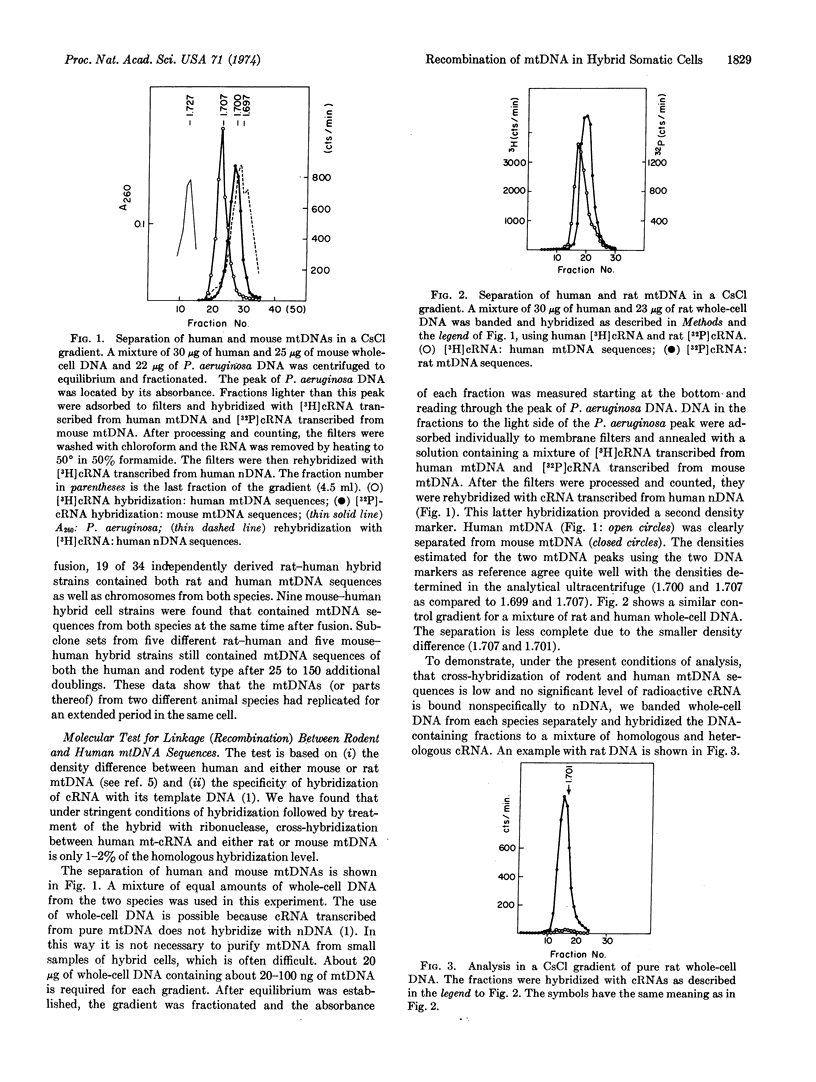
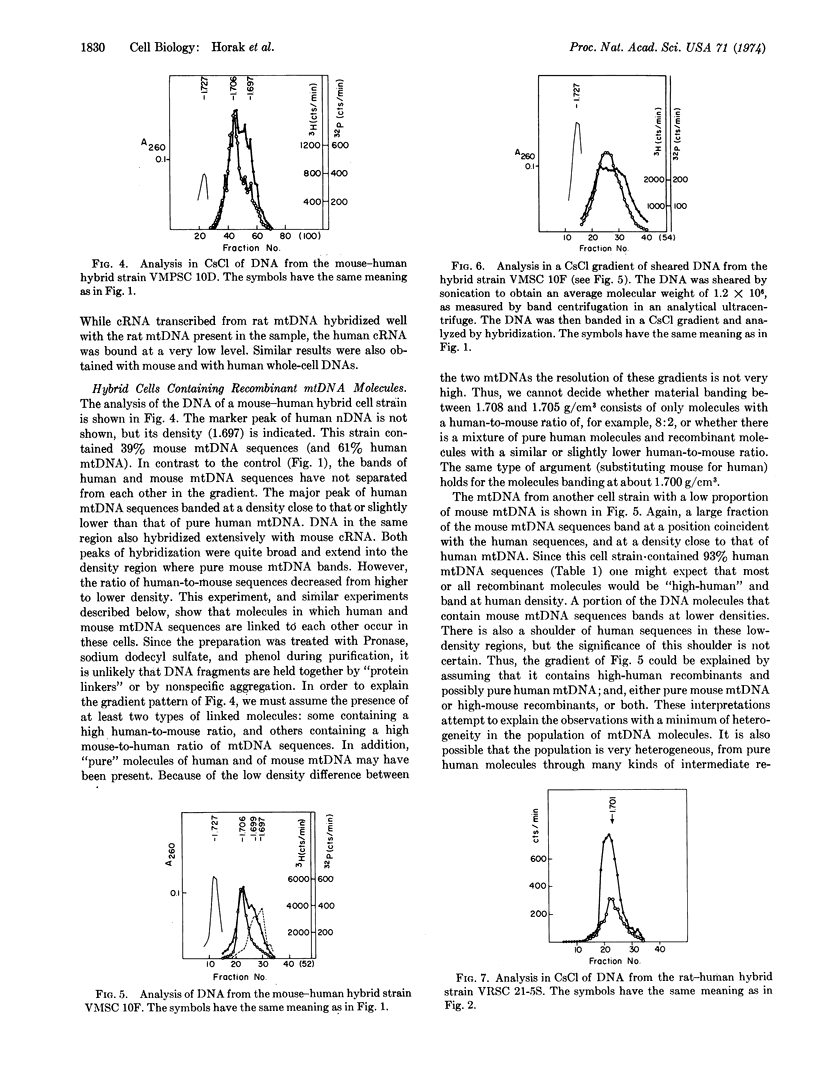
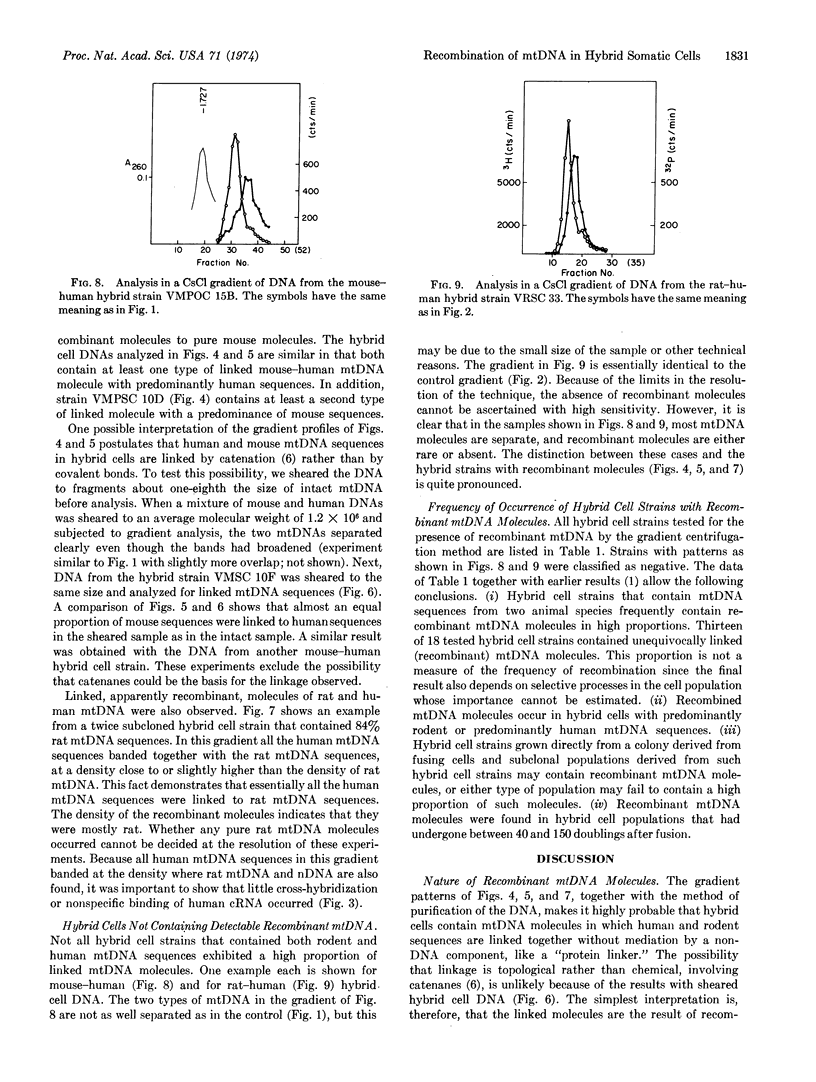
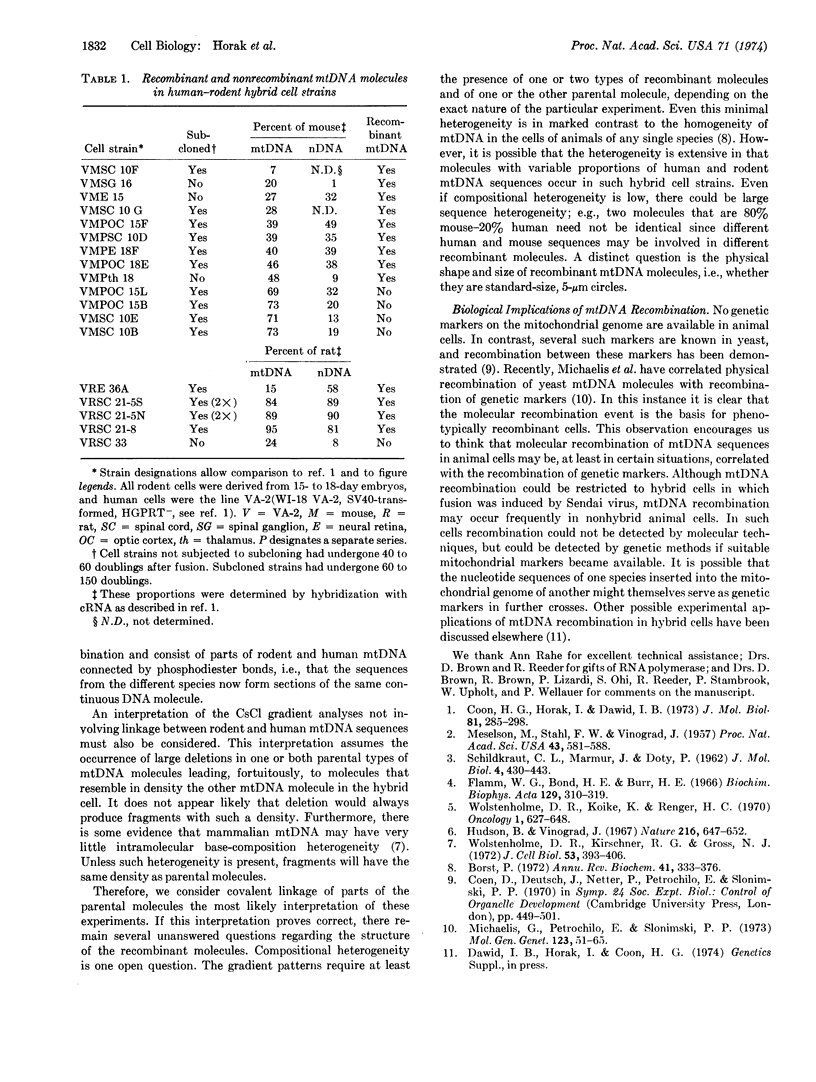
Selected References
These references are in PubMed. This may not be the complete list of references from this article.
- Borst P. Mitochondrial nucleic acids. Annu Rev Biochem. 1972;41:333–376. doi: 10.1146/annurev.bi.41.070172.002001. [DOI] [PubMed] [Google Scholar]
- Coen D., Deutsch J., Netter P., Petrochilo E., Slonimski P. P. Mitochondrial genetics. I. Methodology and phenomenology. Symp Soc Exp Biol. 1970;24:449–496. [PubMed] [Google Scholar]
- Coon H. G., Horak I., Dawid I. B. Propagation of both parental mitochondrial DNAs in rat-human and mouse-human hybrid cells. J Mol Biol. 1973 Dec 15;81(3):285–298. doi: 10.1016/0022-2836(73)90142-3. [DOI] [PubMed] [Google Scholar]
- Hudson B., Vinograd J. Catenated circular DNA molecules in HeLa cell mitochondria. Nature. 1967 Nov 18;216(5116):647–652. doi: 10.1038/216647a0. [DOI] [PubMed] [Google Scholar]
- Meselson M., Stahl F. W., Vinograd J. EQUILIBRIUM SEDIMENTATION OF MACROMOLECULES IN DENSITY GRADIENTS. Proc Natl Acad Sci U S A. 1957 Jul 15;43(7):581–588. doi: 10.1073/pnas.43.7.581. [DOI] [PMC free article] [PubMed] [Google Scholar]
- Michaelis G., Petrochilo E., Slonimski P. P. Mitochondrial genetics. 3. Recombined molecules of mitochondrial DNA obtained from crosses between cytoplasmic petite mutants of Saccharomyces cerevisiae: physical and genetic characterization. Mol Gen Genet. 1973;123(1):51–65. doi: 10.1007/BF00282988. [DOI] [PubMed] [Google Scholar]
- SCHILDKRAUT C. L., MARMUR J., DOTY P. Determination of the base composition of deoxyribonucleic acid from its buoyant density in CsCl. J Mol Biol. 1962 Jun;4:430–443. doi: 10.1016/s0022-2836(62)80100-4. [DOI] [PubMed] [Google Scholar]
- Wolstonholme D. R., Kirschner R. G., Gross N. J. Heart denaturation studies of rat liver mitrochondrial DNA. A denaturation map and changes in molecular configurations. J Cell Biol. 1972 May;53(2):393–406. doi: 10.1083/jcb.53.2.393. [DOI] [PMC free article] [PubMed] [Google Scholar]


